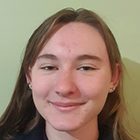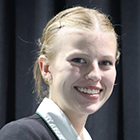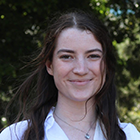Engaging with young people
We are strengthening our relationship with young people and listening to their views on the environment, to identify ways they can be involved in our work to protect the environment and to increase their understanding of our programs.
To achieve this, we have created an Environment Youth Advisory Council and have developed a Youth Engagement Strategy to outline our principals and objectives for engaging with young people and key initiatives for us to listen to their views and involve them in our work. Read our Youth Engagement Strategy (PDF 2.1MB).
Environment Youth Advisory Council
We have established an Environment Youth Advisory Council to seek input from young people aged 15-22 years on a range of environmental issues and to hear their views to help inform our Youth Engagement Strategy.
The youth council will help build an understanding of our programs and create opportunities to listen to young people.
The objectives of the council are to:
- gain insights into the opinions of young people in NSW to ensure the EPA’s policies and programs genuinely consider the perspectives and impacts on young people
- provide members with a unique opportunity to learn about the role of the EPA and gain skills advising on policy, programs and social media content
- enable young people’s input to a broader EPA Youth Engagement Strategy
- share EPA education information with members.
The Environment Youth Advisory Council consists of 12 members from all over NSW and represent a diversity of young people living in NSW. Our inaugural Council come from areas across NSW including the Northern Sydney, Western Sydney, inner Sydney, Blue Mountains, Young, Albury, Mudgee and Central Coast.
The council will meet three times a year, either online or in person, to discuss issues and provide advice and recommendations to the EPA on environmental issues, policies and projects that affect young people in NSW.
At the Environment Youth Advisory Council’s fifth meeting, the EPA’s Acting Director for Incident Management and Environmental Health Jacinta Hanemann welcomed the nine members in attendance. Jacinta shared her experience working at the EPA and gave insights into the daily demands of regulatory practice, incident response and recovery and the key achievements of the EPA over the past year.
Jacinta talked about the importance of the EPA gaining social license with our stakeholder communities in all the work we do.
Meeting’s focus
The meeting was held in person at the EPA’s Elizabeth Street office (with two members joining online) and focused on the feedback on existing problem plastics bans and contributions towards the current ‘Next steps’ plastics consultation, the introduction of organics learning resources into high schools, and ideas around ensuring air quality as part of the current power stations review.
1. Analysis of impact of single-use Plastics Bans
Upon request of the council members, Shaun gave an overview of the social research into the single-use plastic bans conducted by KANTOR. The research’s findings were an overall positive behaviour change within the community.
2. Plastics – the Next Steps Paper
YAC members participated in a brain storming exercise on “What approach, system or solution should the NSW EPA consider to promote re-use for single-use coffee cups?”
Ideas included:
- rewards systems, such as discounts or free coffee (like the Return and Earn system) and on drinks, noting young people love discounts and some businesses already do this.
- implementing policy such as placing tax on disposable cups or charging extra for customers that use single-use cups
- an EPA coffee cup ‘store’ for people to design and personalize their own keep cup.
- more advertising and social media for reusable coffee cups- or an app to go across multiple cafes.
- cup cleaning machines at café/retail outlets.
The Members were also encouraged to ‘Have their Say’ in the EPA’s Next Steps consultation, open until February 2024.
3. Managing organic waste: What comes around, goes around
Members were shown the new ‘Scrap It’ videos and how their feedback from an earlier meeting influenced the EPA’s organics messaging.
Small group discussions followed to develop strategies to engage high school students in waste management in schools
What barriers do you see in involving high school students in managing food waste?
- Individual schools’ inability to participate without funding or having limited access to different types of bins e.g. recycling bins
- lack of information and awareness on what FOGO or lack of care or motivation
- no consequences for not managing waste properly or littering
- competing priorities when high school students are more focused on academics and experiencing big changes in their lives.
How can we encourage high school students to take ownership of organic waste reduction initiatives in their schools?
- posters/signs around schools for students to constantly see the message.
- recycling bins and a Return and Earn bin in the school.
- Points system (sports houses), like merits, to encourage students to put their rubbish in the bin. Students (e.g. recycling ‘monitors’) to go around during
- recess and lunch with recycling and general waste bins to encourage proper disposal.
- EPA to facilitate a seminar in high schools to explain what FOGO is, especially in country towns.
4. Power Stations– the review
 Members were asked to imagine they are a member of the EPA air quality monitoring team, tasked to design an air quality monitoring program around a coal ash dam.
Members were asked to imagine they are a member of the EPA air quality monitoring team, tasked to design an air quality monitoring program around a coal ash dam.
Members determined the best location for the air quality sensors and how best to share information with the community, particularly to encourage them to “Have Your Say’.
Members provided suggestions including identifying at risk groups and where they are geographically based, recognizing that weak spots in signal may be an issue, reporting current and average air pollution levels and providing updates through emails, sms, chat boards and local councils.
The next meeting is planned for March 2024
At the Environment Youth Advisory Council’s fourth meeting, the EPA’s Executive Director Regulatory Operations Metro Steve Beaman welcomed the ten members in attendance. He gave a personal insight into his experience working at the EPA and invited the members to share their views on the Authority’s current priorities.
Steve talked about the importance of operational work in the field with industry to fulfil the EPA’s role as a regulator and to engage directly with stakeholders.
Meeting’s focus
The meeting was held in person at the EPA’s Elizabeth Street office and focused on the next steps in banning single-use and other problem plastics, the value of managing and using biosolids and the ongoing initiatives towards a circular economy, particularly through repair and re-use of consumer goods.
1. Biosolids
Presenters: Alison McVey and Matt Molala
Following an overview and presentation on biosolids, council members were asked to share what words come to mind for them when thinking about biosolids. The predominant words were waste, sewage and fertilizer.
Members were then shown the EPA’s regulatory wheel and were asked which areas they think the EPA should focus their efforts on to regulate biosolids and achieve environmental protection.
The top areas members would like to see the EPA focus their efforts on to regulate biosolids were to educate, monitor, act, enforce and listen. One member suggested a potential way to educate the community was to include information on compostable products, similar to a health star rating.
2. Update on the plastics ban
Presenters: Sam Bannon and Kate Doutney
During the session on plastics, members were presented with different scenarios to test their knowledge on banned versus non-banned plastic products. They also used a micro-metre measurement tool to test the thickness of plastic bags.
Discussions around different banned products included:
- exemptions for plastic single-use straws
- concerns of consumers being charged to purchase thicker plastic bags, and
- interest in understanding the life cycle analysis for bags e.g. alternatives like cotton bags.
In small groups, the members role-played that they were part of the EPA plastics project team and developed a community engagement plan to educate stakeholders on the banned items in the NSW Plastics Action Plan.
Overall, they identified:
- the range of stakeholders to engage with about the new plastics bans including young people, consumers, suppliers and frequent shoppers e.g. people aged between 30 – 50 years.
- different engagement methods to engage different stakeholders, for example, using short videos on social media platforms such as TikTok, and collaborations with influencers to promote the new bans amongst young people.
- opportunities for EPA to develop a ‘sticker’ for products or businesses that are sustainable and compliant.
3. Repair and Reuse
Presenters: Aaron Spadaro and guest speaker Omer Soker, Charitable Recycling Australia
This session aimed to understand the attitudes and motivations of young people when purchasing new and secondhand items and to explore cost and product durability considerations when purchasing these items.
In a simulated shop, members were given tokens to select and purchase as many new and/or secondhand products as their tokens would allow. The activity showed that members were more likely to purchase secondhand items. Items that were more likely to be purchased new were personal products including kitchenware and mobile phones.
Factors that influenced participants’ decision to purchase secondhand or new items
Council members were asked to tell us about the factors that influenced their decision to purchase secondhand and new products.
When purchasing secondhand products, price and durability were the top two factors that influenced members’ decisions. For example, secondhand items such as jeans are durable and more comfortable when they are used, and brand names can be found in op-shops.
“Thrifting is becoming popular because the 90s' and 2000s' fashion is coming back.”
One member was influenced when purchasing a new watch because it is a luxury item and can be seen as an investment.
“When you do go for a luxury item you’ve wanted for a long time, my dad says it’s an investment and better to purchase brand new.”
When purchasing new items, durability, wear and tear and hygiene/ cleanliness were the top factors that influenced members decisions, e.g. drinking glasses, or items such as goggles or phones are personal products that they wouldn’t want to purchase secondhand because of hygiene concerns.
Ideas for how the EPA can do better in promoting second-hand purchasing
- Develop an app that tells people where there are thrifting events or garage sales.
- De-stigmatise with older generations by running Facebook ads.
- More events like one hosted In Melbourne by Charitable Recycling Australia
- If a charity shop had an online store, it can allow people to compare between thrifting and purchasing new items.
The next meeting is planned for November 2023
Introduction from NSW EPA Chief Executive Officer Tony Chappel
At the Environment Youth Advisory Council’s third meeting the EPA’s CEO Tony Chappel welcomed the nine members in attendance. He stressed the importance of their involvement and how their feedback was playing a critical role in informing how we approach key environmental challenges like climate change and plastics.
Tony introduced the EPA’s vision for 2023 including:
- working with industry and other stakeholders to address the causes and consequences of climate change, and work towards net zero emissions by 2050.
- embracing a circular economy and looking for better solutions for managing waste, particularly soft plastics and other emerging problem items such as lithium batteries.
Meeting’s focus
The meeting was held at the EPA’s Elizabeth Street office and focused on the next steps in banning single-use and other problem plastics, the value of reducing food and organics waste, career paths in the environment space and improving the reach of our social media messaging to young people.
1. Stretching our plastics bans to the next phase
Presenters: Ying Chin and Ella Hadzioannou
Members were asked to nominate their top plastic item to be banned or regulated, identify its environmental impact and say why it should be banned.
The top items in order were:
- plastic nets (need corporate leadership from fishing industry)
- supermarket bags (need more reusable produces bags, boxes)
- polystyrene packing ‘peanuts’ (alternatives are biodegradable perforated cardboard or corn product)
- plastic cups and lids (Need technology to replace, e.g, corn based plastic water bottles)
- plastic bowls and lids (bamboo alternatives, or ‘bring your own bowl’ - individual choices)
Members also suggested ideas for how the EPA can market the new banned items including:
- repeated sponsored social media advertising
- marketing through zoos or aquariums to increase the guilt factor on plastics in waterways
- promoting best practice – e.g, cafes who offer refunds for customers bringing their own cup.
2. Keeping food out of landfill - spreading the word as well as the compost
Presenters: Amanda Kane and April Rowe
Members were shown three, short ‘Scrap it Together’ videos about food organics and garden organics (FOGO) and then developed scripts for a second video that could be filmed about food waste recycling. They touched on themes including overcoming the ‘Yuk’ factor’ and keeping it clean.
Common themes proposed in each of the scripts included:
- having a diversity of people represented in the video such as people from different backgrounds, genders, young people and families
- using different contexts, such as regional and city settings, to appeal to a range of people
- using humour or satire
- having a catchy theme song / background music.
3. Fostering environmental careers through the EPA
Presenters: Erin Torsello and Cathy Love
The majority of members indicated they would consider a career in the EPA, with comments including:
- “I believe that the EPA’s values reflect both myself and my friends’ values, meaning the EPA would give us a workplace where we can express those same values and give valuable insights.”
- “Environmental protection is crucial for ensuring our planet’s future, and a career in the EPA is a pathway to action.”
YAC members had a range of ideas to make working at the EPA more attractive for young people including showing the roles available at the EPA and presenting it as a workplace with young people – appealing to a ‘young person’s’ lifestyle.
YAC members suggested school visits, career expos, social media (especially Instagram, TikTok and LinkedIn) promotions, well-advertised university internships or work placements as ways to better promote career opportunities at the EPA for young people.
4. Building a young person’s perspective and approach into our Social Media Strategy
Presenter: Mark Pallot
Members discussed the principles required for engaging with young people through EPA’s social media. Based on the World Health Organisation’s example template, their top choices for success included accessible, actionable, simple, relatable, transparent and understandable.
The most common stakeholders YAC members would like to see engaged by the Social Media Strategy included:
- individuals
- young people – the next generation
- industry and business
- schools and community
- policy makers
- EPA staff and other government agencies.
Members also ‘test drove’ a couple of existing social media posts by the EPA. Their feedback for improvement included to not use emojis but do use people in images, shorter captions, funny and catchy hashtags (e.g, #saveyourdough) and memes or funny photos.
The next meeting is planned for June 2023
Introductions from NSW EPA Chief Executive Officer Tony Chappel and the Minister for Environment and Heritage, James Griffin
At this second, in-person meeting held at NSW Parliament House, both the CEO and the Minister welcomed the eight Youth Advisory Council members in attendance and reiterated how valued their views are to informing our work in the environment space. Minister Griffin also gave an outline of the workings of State Parliament and invited the members to attend Question Time in the afternoon.
The members had an opportunity to pose questions to the Minister and CEO on environmental protection and policy and these were responded to.
Meeting’s focus
The focus of this meeting was on the EPA’s Climate Change Policy and Plan, Partnerships program and the new EPA Youth Engagement Strategy. The members engaged enthusiastically in workshops on all three topics with some key outcomes as follows:
Climate Change Action Plan
Presenters: Jacquelyn Miles and Michele Weight
Members’ feedback and recommendations included
- The need for accessible communications e.g, social media summaries
- Talks with community before implementing actions
- Working with climate education start-ups to inform the actions
- Ensuring Indigenous perspectives are sought for resource management
- Speaking with all levels of industry particularly for emissions reduction
- Considering sponsored advertising or popular figures to mobilise community to take action
- Ensuring licensees are implementing changes
- Fact sheets for children and programs for schools
Partnerships
Presenters: Felicity Calvert and Mitchell Jones
Members gave feedback on EPA partner ‘Take 3 for the Sea’’s video on single use plastic ban. They suggested expanded messaging to other demographics in Western Sydney and rural regions.
The members also gave feedback and advice on
- The need to promote the EPA brand and its work more – comment “People at my high school don’t know what the EPA does”
- Promotion of EPA programs through schools and universities via posters and talks.
- Return and Earn stations at sports grounds and events
- Collaboration with businesses such as reusable drink bottles, World Surf League
- Partnering with zoos
- Engaging more with existing partner groups like Girl Guides and the Rural Fire Service
- Leverage existing local council youth advisory committees
Draft EPA Youth Engagement Strategy
Presenter: Liesbet Spanjaard
Members worked together in two groups to set their top six priority actions in the strategy for the EPA to work on.
The top six are
- Actively encourage young people to participate on our Community Consultative Committees and update future Terms of References accordingly. Ensure the committees are accessible for young people.
- Explore opportunity to host a Youth Leadership Forum bringing high school students across NSW together to discuss key environmental matters of concern.
- Explore opportunities to provide education on environmental issues to Aboriginal and other culturally and language diverse young people, including on waste and climate change, e.g, through schools or events such as the Koori Knockout, Yabun or multicultural festivals.
- Investigate potential collaborations with universities that run courses on environmental protection, such as Career Trackers for young Aboriginal tertiary students or internships.
- Identify partnerships and sponsorships with other organisations, including not-for- profit organisations which run youth environmental leadership initiatives and events, that EPA could support and be involved in.
- Investigate the potential role social media influencers and celebrity ambassadors could play in informing and educating young people around environmental protection.
As a result, we have re-ordered the planned actions in the strategy in preparation for publication.
Question Time
Following the meeting, the members attended and observed parliamentary Question Time.
The next meeting is planned for March 2023
Introduction from the Minister for Environment and Heritage, James Griffin
At the inaugural meeting the Minister for Environment and Heritage, James Griffin congratulated members on their position and outlined his vision for engaging with youth.
Introduction from Youth Advisory Council members
Members introduced themselves to the Minister and shared their interest in the environment and being part of the Youth Advisory Council.
Overview of the EPA – A/CEO Carmen Dwyer
Members heard from the EPA’s A/CEO Carmen Dwyer, who explained the role of the EPA, as the lead environmental regulator and provided a background into the work we do to inform, involve and support stakeholders, business and community. Carmen also outlined key initiatives to reduce litter and waste, including Return and Earn and Love Food Hate Waste. Members had the opportunity to ask questions of the A/CEO and other members of the Executive.
Single use plastics bans presentation – EPA’s Kate Doutney
Members were presented an update on the NSW Governments program to ban single use plastics in NSW, including the banning of lights weight plastic bags from 1 June 2022 and further single use plastics planned to be banned from 1 November 2022.
Discussion and feedback on single use plastics
Members discussed the bans including how the EPA is educating business and community about the bans, the policy work involved in background to enable the bans, the alternatives for plastics and funding available for business innovation.
We heard the views of members on how the bans could be promoted amongst young people, including via channels such as social media and through influencers, online school news sites and university societies and groups. We also heard their views on items to be banned in the future including on banning fruit and vegetable bags, plastics and coffee cups.
Youth Engagement Strategy facilitated feedback session – EPA’s Clair Cameron
The meeting also provided the EPA with an opportunity to outline our plan for a Youth Engagement Strategy and gain members' insights to inform its development, including their key environmental interests and how they receive information and trusted sources of information.
 Chevelle-Rose McCrohon
Chevelle-Rose McCrohon
Chevelle, from Mudgee, Central West NSW, identifies as non-binary and as a First Nations person. Chevelle has been a member of the Mid-Western Regional Youth Council since May 2022 and is most interested in climate change, behaviour change and legislation.
 Emily Rose
Emily Rose
Emily is from Copacabana, Central Coast. She has been a member of her local surf lifesaving club since 2013, and has been a member of the Junior Lifesaver of the Year Youth Group since February 2022. Emily is most interested in water quality, waste management and behaviour change.
 Evan Ademovic
Evan Ademovic
Evan is from Minchinbury, Western Sydney. He is studying Economics at Macquarie University, and has been a member of the Blacktown Council Youth Advisory Committee for 3 years. Evan is most interested in agriculture and grazing, industry and legislation.
 Jaleel Albaf
Jaleel Albaf
Jaleel is from Young NSW. He is a high school student attending Young High School, and has been a member of the Young High School Leadership Team for 12 months. Jaleel is most interested in forestry, waste management and behaviour change.
 Jasmine Cook
Jasmine Cook
Jasmine, from Falconbridge, Blue Mountains, attends St Columba’s Catholic College, and has been a member of the Blue Mountains Youth Council for 18 months. Jasmine is most interested in climate change, behaviour change and legislation.
 Jessica Muir
Jessica Muir
Jessica is from Dee Why, Northern Sydney. She is a high school student and Vice-Captain attending Mater Maria Catholic College, and has also been a member of the Northern Beaches Youth Advisory Group for 12 months. Jess is most interested in waste management, climate change and behaviour change.
 Joshua Fernandez
Joshua Fernandez
Joshua attends Corpus Christi College Maroubra, Sydney where he is Vice Captain. Josh has been a part of Coogee Surf Club since 2011, and serves on both the Club and Sydney Branch Youth Advisory Committees. Josh is most interested in water quality and legislation.
 Lily-Anne Chapman
Lily-Anne Chapman
Lily-Anne grew up in Broken Hill NSW and now lives in Stanmore, Sydney. She is a university student studying an Environmental Science degree at the University of New South Wales. Lily-Anne is most interested in water quality, biodiversity and climate change.
 Lotte Weber
Lotte Weber
Lotte is from Katoomba, Blue Mountains. She has been a member of the Blue Mountains City Youth Council for four years and is currently studying International Relations at the Australian National University. Lotte is most interested in industry, behaviour change and communication.
 Nabilah Chowdhury
Nabilah Chowdhury
Nabilah is from Ashfield, Sydney. She has been involved in various youth councils and groups such as Jane Goodal National Youth Leadership Council, Yatz leader Taronga Zoo, Australian Wildlife Society, Australian Youth Affairs Coalition, Junior Chamber International, UNYouth, School strike 4 climate, NSW Young Parliament, Australian Youth Climate Coalition. Nabilah is a Bengali speaker, and is most interested in climate change, air pollution and conservation.
 Nicholas Chambers
Nicholas Chambers
Nicholas is from Cromer, Northern Sydney. He is studying Environment and Law at Macquarie University, and is a member of the Northern Beaches Council Youth Advisory Group. Nick is most interested in waste management, climate change and legislation.
 Tamanna Anand
Tamanna Anand
Tamanna is from Lidcombe, Sydney. She is a high school student attending Santa Sabina College, and has also been a member of the Strathfield Youth Group since the beginning of 2022. Tamanna is most interested in waste management, climate change and air pollution.
The NSW Environment Protection Authority (EPA) is committed to increasing engagement with children and young people. As part of this an Environment Youth Advisory Council (YAC) is being created.
1. Objectives of the YAC
The objectives of the EPA YAC are to:
- Gain insights into the opinions of NSW young people to ensure the EPA’s policies and programs genuinely consider them
- Provide participants a unique opportunity to learn about the role of the EPA and gain skills advising on policy, programs and social media content
- Enable young people’s input to a broader EPA youth engagement strategy
- Share EPA education information with participants.
2. Responsibilities of YAC members
YAC members have the following responsibilities:
- Attend and actively participate in meetings
- Provide advice and make recommendations to the NSW EPA
- Act in a professional and responsible manner.
3. Membership
Membership is through invitation after completion of a YAC Application Form, which will be assessed against an eligibility criterion (see section 4) by the Selection Panel (consisting of two EPA staff members and one person representing the Advocate for Children and Young People and one independent representative).
Applications is open to young people aged between 15 to 22 years, living in NSW. The Youth Advisory Council will consist of a maximum of 12 youth representatives.
Membership shall aim to include a broad range of young people from a range of ages, genders, cultural backgrounds and locations in NSW.
4. Eligibility Criteria
The following eligibility criteria will apply to the selection of Youth Advisory Council members:
- Applicant has an interest and understanding of environmental and sustainability issues (such as waste issues including single use plastics, food waste and fast fashion, water issues, climate change, sustainable development).
- Applicant has the willingness to work in a team and participate in group discussions.
- Applicant can demonstrate the ability to listen to others, be respectful of others’ opinions and be open to other ideas.
- Applicant has a passion for representing young people’s voices in Government.
- Applicants have the capacity and motivation to commit to the YAC for the required duration.
5. Tenure and termination of membership
Members will be initially appointed for a year, with possibility of extension for a second year. Membership will cease if:
- The member turns 24 years of age during their tenure.
- The member fails to attend two meetings in a row.
- The member behaves in a way that is contrary to the responsibilities of YAC Members detailed in Section 2.
6. Sitting fees and expenses
The YAC will be established as a committee of the EPA and sitting fees will be paid to members. Members will receive $110 for a sitting for both online and in person meetings.
Should a member not attend a meeting, a stipend will not be paid. EPA will cover travel expenses to attend face to face meetings.
7. Induction
Once elected, the YAC is to receive an induction into the role and its requirements. This will be an online meeting.
8. Vacancies
A vacancy on the YAC shall be filled in the same manner as the original appointment is made.
9. YAC web portal
YAC members will have access to a private online portal where relevant information including meetings dates will be available.
10. EPA Contact
The Youth Advisory Council will be supported by the NSW EPA Stakeholder Engagement Team. The primary contact is Katie Ritchie, engagement@epa.nsw.gov.au
11. Media authority and consent
The YAC or its’ members have no delegated authority to make comments to the media on behalf of the EPA.
All members are to provide a written consent for the EPA to publish images. And must also gain consent to post any images or comments on their own social media.
12. Meetings
12.1 Frequency of meetings
Participants will meet for an initial induction meeting online and then three times per year. One meeting will be online via Zoom, with the possibility of two meetings being in-person (depending on public health guidelines at the time).
12.2 Attendance at meetings
YAC members are expected to attend all meetings.
Should a member be unable to attend a meeting they must inform the EPA primary contact and provide a reason. If a member does not attend two meetings in a row, their membership will be automatically revoked.
12.3 Schedule of meetings 2022
The following schedule has been provided for YAC meetings. Dates will be provided to members at the first meeting.
|
Title |
Date |
Location |
|---|---|---|
|
YAC induction |
June 2022, 5.30pm-7pm |
Online via Zoom |
|
YAC meeting 1 |
June or July 2022 |
Online via Zoom |
|
YAC meeting 2 |
November 2022 |
Face to face |
|
YAC Meeting 3 |
Early 2023 TBC |
Face to face or online |
12.4 Meeting agendas
The NSW EPA team will set the agendas for Youth Advisory Council meetings in consultation with the council and circulate to members one week in advance of meetings.
12.5 Meeting Chair/facilitation
The NSW EPA or their contractors will chair/facilitate the Youth Advisory Council meetings.
12.6 Meeting notes and documents
All relevant meeting notes and documents will be housed on the Youth Advisory Council online portal.
13. Review of the Terms of Reference
The YAC Terms of reference will be reviewed after the initial two years of the YAC.



